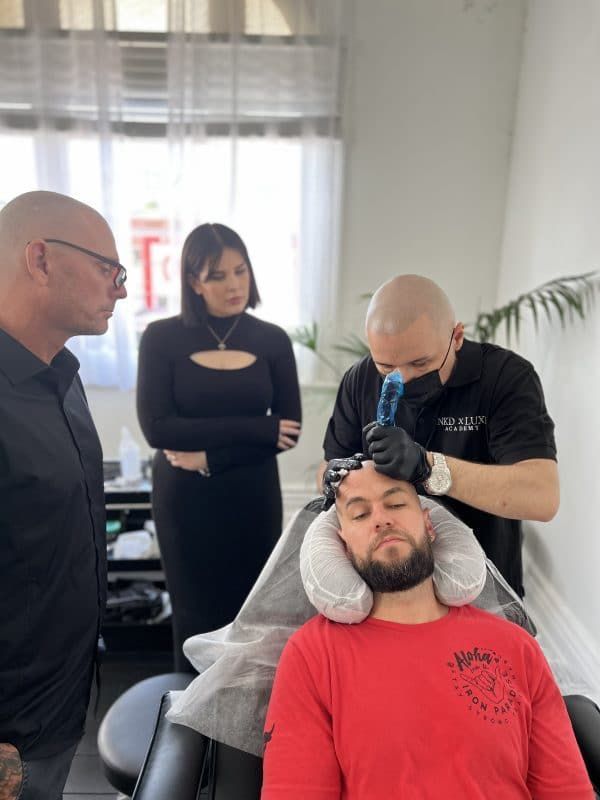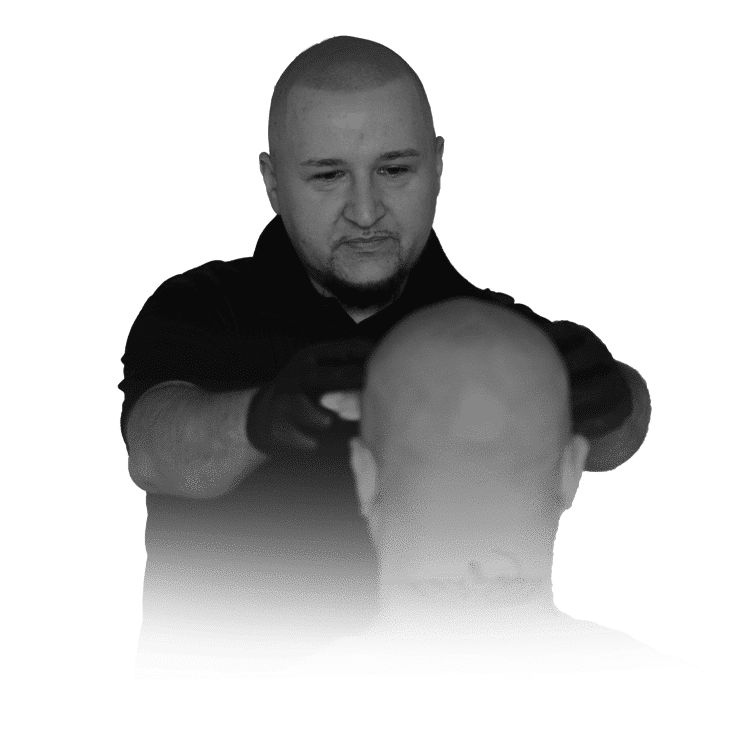Scalp Micropigmentation
Scalp Micropigmentation’s Major Benefits
Most people get scalp micropigmentation after trying many different ways to get their hair to grow back. People who are losing their hair may also use this process in combination with other treatments.
For example, some patients get the pigment treatment to cover scalp scars from previous procedures, which involve removing a strip of scalp and transplanting hair follicles to different places on the scalp.
Whether you are a woman with female pattern baldness or a man with male pattern baldness, this cosmetic process can work well with a skilled technician using the latest technology.
Advanced scalp micropigmentation practitioners use computers to create a customized treatment that matches the skin type and colour of the patient. This makes the fake hair stubble look more natural.
Scalp micropigmentation has a lot of pros.
Millions of men and women have cosmetic scalp and hair problems like intractable alopecia areata or female genetic balding that are caused by dermatological or congenital conditions.
Many men have iatrogenic deformities because of hair restoration procedures done between the 1950s and the 1990s. These procedures used simple methods and left scars from strip harvesting, so these men have iatrogenic deformities.
Because hair loss is often a process that gets worse over time, genetic and medical causes often worsen over time. Scalp micropigmentation (SMP) is a tattooing method that uses a stippling pattern to look like close-cut hair follicles. This relatively new method can help a lot with the appearance problems caused by the above conditions.
Here are a few things people like about scalp micropigmentation and why they like to use it.

Long term use
Some solutions and treatments for hair loss, like transplants, need to be checked every 4–6 months to ensure the hair follicles are still healthy.
On the other hand, scalp micropigmentation is suitable for three years with little upkeep. Restorative pigmentation is only needed if and when the colour on the treated scalp starts to fade.
No extra maintenance
This procedure requires little to no maintenance work. After your scalp micropigmentation sessions, you won’t have to do anything else to keep it looking good. Professionals suggest that people use sunscreen and not exfoliate. These steps keep the colour from fading, so you won’t have to come back for touch-ups for a while.
Fast procedure
Scalp micropigmentation doesn’t require much recovery time because it doesn’t involve any invasive procedures or healing time. It only takes a few days.
Micropigmentation is almost painless, and you only need a few sessions to get a good hairline tattoo on your head.
Instead, the scalp is cleaned well. Each session takes a few hours, and after the first session, you can see the results.
Realistic
Another great benefit is that scars can be hidden. Scalp micropigmentation can be used to cover up and hide the look of scars on the scalp and help hair follicles grow. With the strategic placement of pigment dots that mix with the rest of the hair, it is possible to hide flaws.

Appearance
People often think that people who are losing their hair or having their hair thin out are old or look older than they are. This situation can sometimes make a person feel bad about themselves because they think people are looking at their baldness and thinking they are getting older.
So, micropigmentation helps people with hair thinning, alopecia, or a receding hairline feel better about themselves.
Reliable
When treating hair loss, micropigmentation is not the same as hair transplantation. During a hair transplant, hair follicles from other body parts are taken and surgically placed on the scalp.
Scalp micropigmentation uses tiny needles to make the colour of the hair match the colour of the scalp. It makes the hair look like it has more volume and thickness. There are many benefits to getting scalp micropigmentation. It is safe, doesn’t hurt, and doesn’t need much or any strict changes to your lifestyle or upkeep.
SMP is a comparatively recent treatment option for health and beauty dermatologists and hair restoration surgeons who want to grow their businesses.
So we talked about the SMP process’s advantages, disadvantages, and problems and the medical and surgical scalp and hair problems that can happen when used. Because this is a cosmetic tattoo, the outcomes are elegant and show a skilled provider’s technical and artistic skills.
Thousands who had trouble with their hair before but didn’t know what to do will be pleased with this development.







